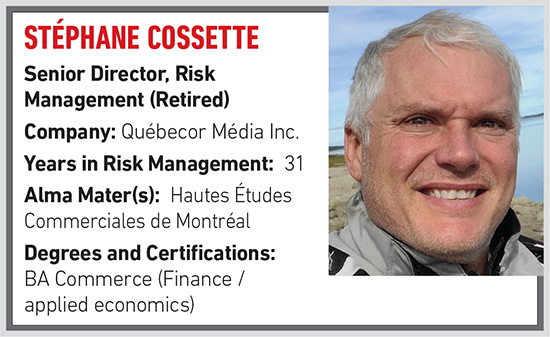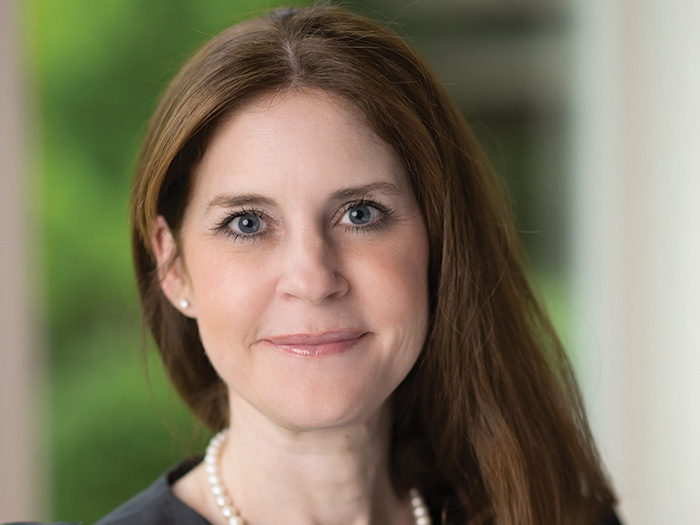Risk Manager Stéphane Cossette on the Changes in Risk Management, His Pride at Work and More
R&I: What was your first job?
Commercial insurance underwriter at Continental Insurance in Toronto.
R&I: How did you come to your current position?
I got my last job after being the insurance broker for them for four years. The previous risk manager left the company, and I stepped into the job naturally.
R&I: What’s been the biggest change in risk management and the insurance industry since you’ve been in it?
Compliance in risk management has become a priority for the C-suite. They now look at topics like enterprise resource management and cyber risk on a monthly basis from a governance perspective.
Though it brings a lot of attention to our extended field of work, it somehow takes resources away from actually preserving our entity from risk by focusing mainly on reporting and taking resources away from actually managing the risks, such as loss controls and risk transfers.
Some would say you first need the attention before getting the budgets, however, what I see is a lot of talk and reporting but not enough manpower in the trenches doing the actual risk prevention.
R&I: What’s the biggest challenge you’ve faced in your career?
Communicating the hard markets. Insurance premium will always be a significant part of risk management.
Though I always explained to my management that premiums were optimized but were still subject to inflation of values and mostly market rate trends, without something tangible, such as a published prime rate, the CFO and CEO seldom accepted that premiums will increase in a hard market, regardless of our efforts.
R&I: What were some of the most complex or important risk management challenges you faced?
I really enjoyed enabling the Red Bull Crashed Ice in Quebec City — a downhill race on skates.
From the start, this project contained every nightmare for a risk manager, from building large scaffolding in the entertainment sector of Quebec City surrounded by historical buildings to serving alcohol in a festive atmosphere in freezing weather to the actual event, which involves groups of armored athletes skating down a sloped ice chute.
My initial assessment was overwhelming, but once broken down into pieces, and by teaming up with other experts — including Simon Keshishian, the risk manager from Red Bull — the end result was a highly controlled event with very little retained risk.
R&I: In what terms could the risk management community be doing a better job?
I think we need to refocus on the basics: risk management.
We talk about a lot of new risks that are very important, yet we take for granted that traditional risks are already managed and do not require our full attention anymore.
For example, cyber risk is a big thing today but represents less than 1% of all losses. The bulk of claims still come from fire, flood and windstorm. I understand these traditional risks are less attractive, but if we only focus on the latest trend, we might become irrelevant once the real risk materializes.
R&I: Who have been your mentors and why?
I had many professional mentors, and I’ve tried to learn from everyone I met at any level.
However, the biggest influence in my life came from my personal life. My father taught me that my word is priceless, and my mother taught me to be honest and hardworking.
From there, I tried to find these qualities in anyone I’d meet and figure out how they used these same values to succeed. Anyone who shared these core values could teach me something, from the janitor to the CEO.
R&I: What have you accomplished that you are proudest of?
Raising my daughter in a way that she is proud of me but still wants to become an individual with her own goals and thoughts.
Professionally, I got my pride from my peers recognizing my competence and contribution. It’s way quicker to impose your view with force, logic or hard work than to let people come to your side of the table by their own inclination. But the latter brings a sense of communion and rightfulness.
The official recognitions I got through my career felt great, but the day-to-day testimony I would get was even better. This is why I would try to recognize people as often as I could so they could feel the same pride I did.
R&I: What’s your favorite book or movie?
I read a lot of everything, from science fiction like Isaac Asimov to the more poetic, like Alessandro Baricco.
Currently, I’m reading the biography of Alexander the Great by Valério Manfredi.
One book that made my head spin was Howard Bloom’s “The Lucifer Principle.” Even if you don’t agree with his point of view, his ability to break down the complex world we live in, and in such a logical way, is amazing.
R&I: What is your favorite drink?
Scotch. I love whiskey in general, but I’m biased to malt over anything else.
Besides the taste and smells that I love, I find it amazing to have such a broad spectrum from something so standardized.
It also helps that it was my father’s favorite drink, and that sipping a glass will always remind me of the good times I shared with him.
R&I: What is the riskiest activity you’ve ever engaged in?
I ride an adventure motorcycle in very secluded areas. I’m an experienced mountain climber.
I scuba dive and I’ve traveled all over the world, including to places I would not recommend. But none of these scares me like my wife when she’s upset. &











